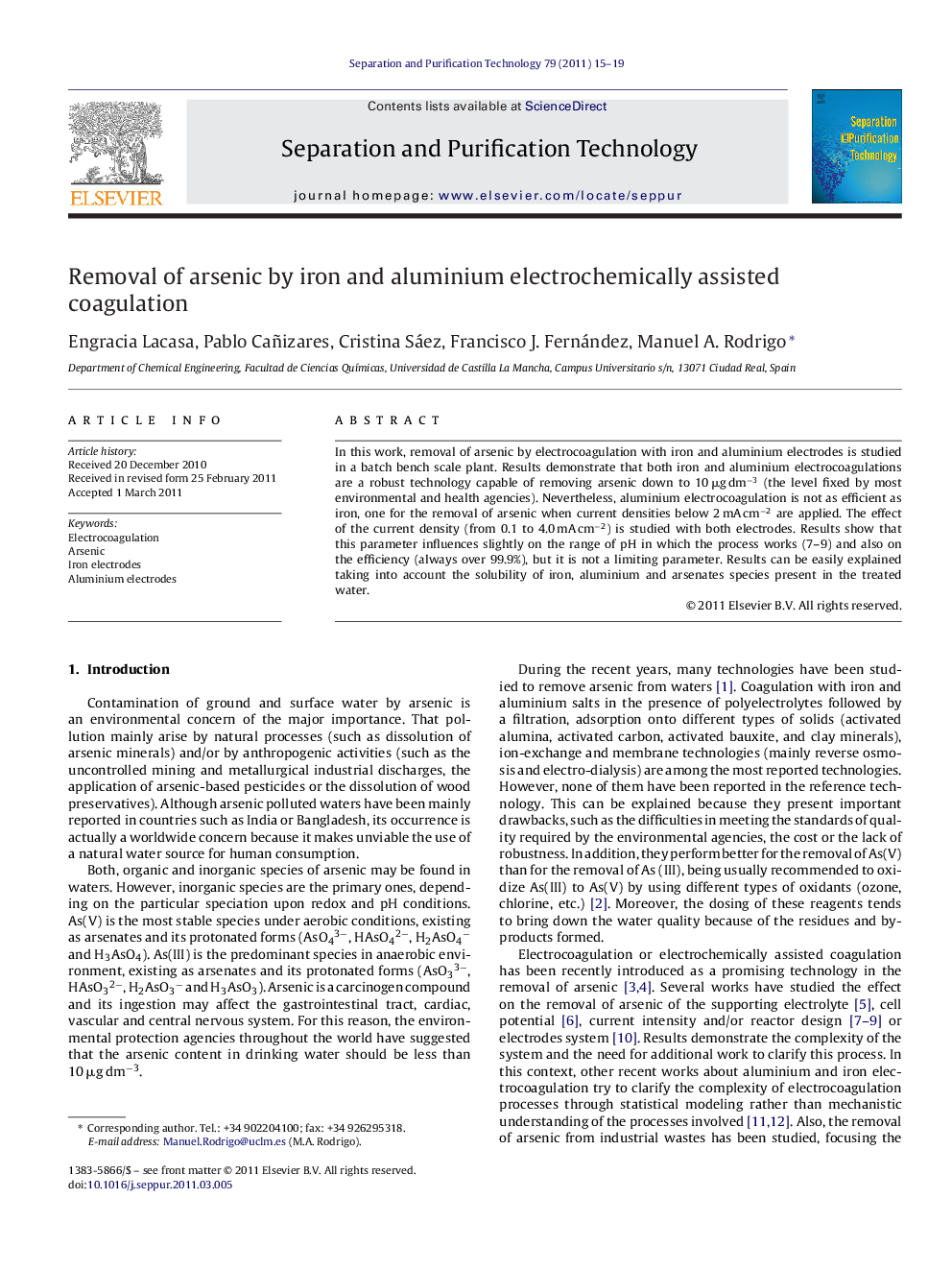| Article ID | Journal | Published Year | Pages | File Type |
|---|---|---|---|---|
| 642676 | Separation and Purification Technology | 2011 | 5 Pages |
In this work, removal of arsenic by electrocoagulation with iron and aluminium electrodes is studied in a batch bench scale plant. Results demonstrate that both iron and aluminium electrocoagulations are a robust technology capable of removing arsenic down to 10 μg dm−3 (the level fixed by most environmental and health agencies). Nevertheless, aluminium electrocoagulation is not as efficient as iron, one for the removal of arsenic when current densities below 2 mA cm−2 are applied. The effect of the current density (from 0.1 to 4.0 mA cm−2) is studied with both electrodes. Results show that this parameter influences slightly on the range of pH in which the process works (7–9) and also on the efficiency (always over 99.9%), but it is not a limiting parameter. Results can be easily explained taking into account the solubility of iron, aluminium and arsenates species present in the treated water.
Graphical abstractFigure optionsDownload full-size imageDownload as PowerPoint slideHighlights► Electrocoagulation with iron and aluminium electrodes can be used for arsenic removal. ► Allowed to remove arsenic to meet the standards of quality by most environmental and health agencies (10 μg dm−3). ► Similar efficiencies in aluminium and iron electrocoagulation when working up to 2 mA cm−2. ► Lower efficiencies of aluminium electrocoagulation for lower current densities. ► A mechanistic model of arsenic removal based on solubility of coagulant and arsenic species is proposed.
